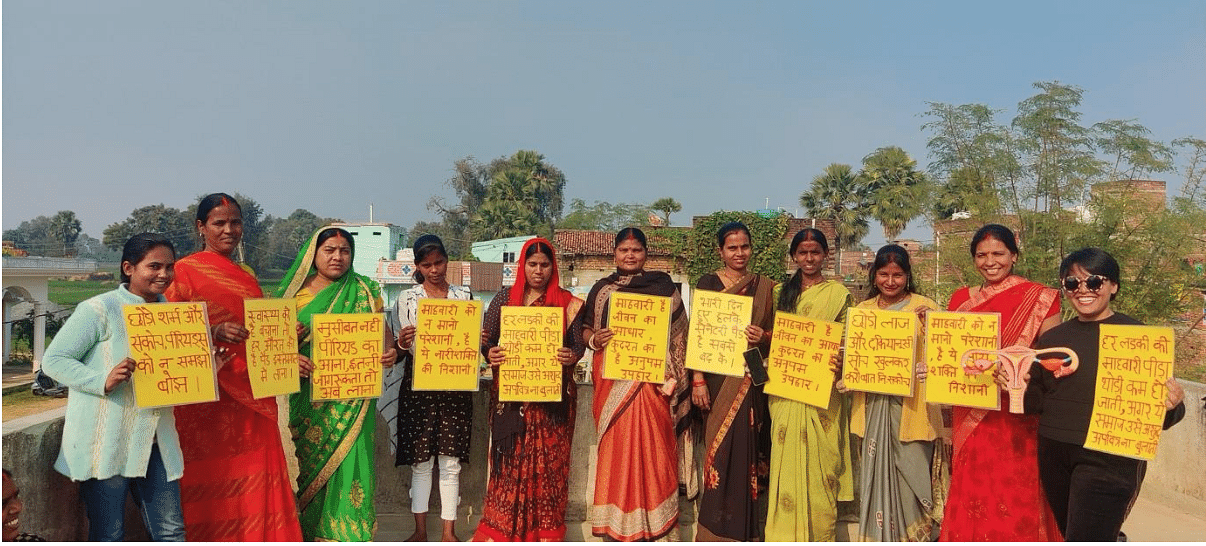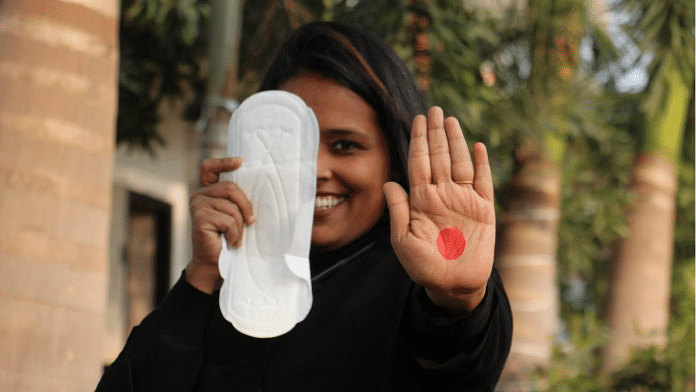Thank you dear subscribers, we are overwhelmed with your response.
Your Turn is a unique section from ThePrint featuring points of view from its subscribers. If you are a subscriber, have a point of view, please send it to us. If not, do subscribe here: https://theprint.in/subscribe/
Red is a color that carries deep symbolism across cultures. It represents passion, love, strength, and power. It is the color of Valentine’s Day, a celebration of love and relationships. But it is also the color of menstrual blood—an equally powerful and life-giving force that has been stigmatized and hidden for centuries. Why does society embrace one and shame the other when both are deeply connected to life and love?
As someone who has worked extensively in menstrual health awareness, I have often pondered this paradox. The same red that is seen in roses, heart-shaped chocolates, and romantic gestures on Valentine’s Day is also the color of the blood that signifies a woman’s fertility, strength, and resilience. Yet, while one is celebrated with grandeur, the other is shrouded in whispers, secrecy, and shame.
The Red of Valentine’s Day: Love, Passion, and Connection
Valentine’s Day is synonymous with love—romantic, platonic, and even self-love. The red of this day represents intense emotions, deep affection, and the physical attraction that binds relationships. It is the color of our heart, which beats faster when we feel love. It is the color of roses, symbolizing beauty and desire, and the color of lips touched in moments of passion. Red, in this context, is glorified. It is cherished. It is put on display.
We do not hesitate to paint cities red with Valentine’s Day decorations. Couples proudly express their love by exchanging red gifts. Red is a symbol of connection, desire, and the essence of life itself. But in this very celebration of love and human connection, we often overlook the most natural and fundamental red—menstrual blood, the source of human creation.
The Red of Menstruation: Stigma, Strength, and Silence
Unlike Valentine’s Day red, the red of menstruation is treated as something to be hidden. Society has constructed menstruation as something impure or embarrassing, even though it is a biological process essential to human life. I remember my own first period in school, a moment of confusion and embarrassment when my white skirt was stained red. It was a day I felt singled out, not celebrated. I was instructed to be discreet, to not talk about it openly, to keep it hidden.
When I started working with marginalized women in Bihar, I encountered an even deeper level of stigma. Many women did not even know why they menstruated. They reused cloth rags without proper hygiene, dried them in secret corners, and even used sand and ashes to absorb menstrual blood. I met adolescent girls who skipped school because they were afraid of staining their clothes. Women were conditioned to believe they were impure during their periods, unable to cook, touch religious items, or even enter their own homes freely.
How ironic that the same red, which is a source of celebration on Valentine’s Day, is seen as a source of shame when it comes from a woman’s body! Why do we embrace the color when it signifies romantic love but reject it when it represents a woman’s natural cycle of life?

Love, Life, and the Feminine Power of Red
If we truly understand love, then we must also love and respect the natural processes of the body. Menstruation is a symbol of strength, endurance, and the power to create life. It is just as worthy of acknowledgment as romantic love. In fact, without menstruation, there would be no new life, no relationships, and no love stories to celebrate on Valentine’s Day.
In my journey as a menstrual health advocate, I have seen first-hand how breaking the silence around periods transforms women’s lives. I have seen young girls gain confidence once they understand their bodies. I have seen mothers and daughters openly discuss menstruation instead of treating it as a shameful secret. I have witnessed rural women shift from using unhygienic materials to making their own sanitary products, reclaiming their dignity in the process.
Bridging the Gap: Red Without Shame
It is time to connect the red of love with the red of menstruation. Just as Valentine’s Day encourages people to express love openly, we need to normalize conversations about menstruation. Love is not just about romance; it is about acceptance, respect, and breaking unnecessary stigmas.
Imagine if we could celebrate both the reds equally—if schools and workplaces could acknowledge menstruation as a natural part of life, just as they acknowledge and encourage Valentine’s Day celebrations. Imagine if media campaigns that promote love and relationships also spoke about menstrual health, teaching boys and girls alike that periods are not something to be ashamed of.
For me, this journey is deeply personal. From the moment of embarrassment in my school days to working with thousands of women in rural Bihar, I have realized that the true essence of love is acceptance. Love is not just about chocolates and roses; it is about respecting the body that gives life. It is about embracing the red of menstruation with the same pride with which we embrace the red of Valentine’s Day.
This February, as people celebrate love in all its forms, let’s also celebrate the body, the cycle of life, and the power that lies in menstrual blood. Because love, in its truest sense, is about embracing all aspects of life—without shame, without stigma, and with pride.
These pieces are being published as they have been received – they have not been edited/fact-checked by ThePrint


